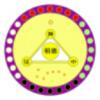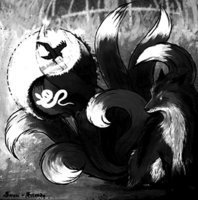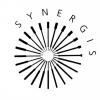Search the Community
Showing results for tags 'Hermeticism'.
Found 4 results
-
-
- alchemy
- philosophy
-
(and 1 more)
Tagged with:
-
I would like to introduce myself to this forum. My Magick name is Shaialazin. Formerly I was known as N.O.X. Infinitum. My given name is Bryce J. Lemon. My motto and word is Gaia Ladrieh (165). I am a Ritual Magician, the Founder of the O!O School of Magick, the Creator of The Temple of the Archinox, and the Author of 'Excalibur: The Book of the Law: Solved'. My magickal journey was initiated 15 years ago and has continued through a vast series of adventures through 57 countries, thousands of temples and rituals, meetings with teachers and the consumption of volumes of Sacred Texts. Magick is truly my career and my destiny and my specialities are aligned with ceremony and ritual, astral projection, mystic vision, navigating alternate dimensions and timelines, and cracking Occult codexes and ciphers. I am here on this site to offer my knowledge, skills and experience I have gleaned from my life of initiations and ordeals - the key to true Magickal realization and power. I hope to converse with many of you, answer questions, and learn from your insights and experiences as well. In love under the will, Shaialazin
-
Hi Tarot Bums, It is a feature of many Tarot decks that the 36 numbered Minor Arcana reflect the images and meanings traditionally attributed to the 36 decans of Astrology, even though this is not always obvious. The most prominent system for making the link is no doubt the one devised by the Hermetic Order of the Golden Dawn. It was integrated by both Aleister Crowley and (more disguisedly) Arthur Edward Waite in the design of their respective decks. But it is nowhere as prevalent as in the beautiful Liber T - Tarot of the Stars Eternal. That deck's Major Arcana and Court Cards are somewhat simplified versions of Crowley's Thoth cards, but what sets the Liber T apart is its reception of the decans' images as found in the Sublime Books, Liber Hermetis, Indian astrological tradition, Latin Picatrix, Agrippa's Three Books of Occult Philosophy, Giordano Bruno's De Umbris Idearum, as well as in the "Hall of the Months" in the beautiful Palazzo Schifanoia in Ferrara, Italy. It is noteworthy that there are many parallels between the images in all these systems, spread out through different times and cultures - notwithstanding the transmission that without a doubt occurred. But let's look at an example. The Two of Wands is attributed according to the Golden Dawn with the first decan of the Zodiac (the first ten degrees of Aries). What do the classical sources have to say on this decan? (We find them conveniently compiled in Austin Coppock great book 36 Faces - The History, Astrology and Magic of the Decans.) Liber Hermetis: "It is an armed sign, standing upright, walking, having the likeness of a man, standing on feet like claws and holding above his head a double-sided battle-axe with both hands." Birhat Jakata: "A man with white cloth around his waist, dark complexion, pretending to protect, fearful red eyes and a lifted axe." Latin Picatrix (the direct inspiration for the Golden Dawn's decan interpretations): "The image of a black man with a large and restless body, having red eyes and with an axe in his hand, girded in white cloth, and there is great value in this image. This is a face of strength, high rank and wealth without shame." Three Books of Occult Philosophy: "A black man, standing and dressed in white and girded, a large body, red eyes, and great strength, as if angry ... This image signifies and is made for boldness, strength, loftiness, and immodesty." Further, we want to consider what some of the pioneering Tarot books in more modern times tell us about the Two of Wands: Book T (this is the GD's outline for Tarot and foundation for the Liber T deck): "The Lord of Dominion ... Strength, domination, harmony of rule and of justice. Boldness, courage, fierceness, shamelessness, revenge, resolution, generous, proud, sensitive, ambitious, refined, restless, turbulent, sagacious withal, yet unforgiving and obstinate." The Book of Thoth (Aleister Crowley's treatise on his deck which the Liber T reproduces): "The background of this card shows the power of the planet Mars in his own sign Aries, the first of the Signs. It there represents Energy initiating a Current of Force. The pictorial representation is two Dorjes crossed. The Dorje is the Tibetan symbol of the thunderbolt, the emblem of celestial Power, but more in its destructive than its creative form. More, that is, in its earlier rather than its later form. For destruction may be regarded as the first step in the creative process. The virgin ovum must be broken in order to fertilize it. Fear and repulsion are therefore the primary reaction to the assault. Then, with understanding of the complete plan, willing surrender rejoices to co-operate.Six flames issue from the centre. This indicates the influence of the Sun, who is exalted in Aries. This is the creative Will." Crowley's design for the card mirrors its decan's meaning. Of course, this short introductory survey would be incomplete if we would neglect A. E. Waite's version of the card: Wikipedia tells us how this card is generally understood by contemporary Tarot readers: ""The image on the Rider-Waite deck shows us a wealthy merchant or noble, looking out at his territory, or perhaps for his ships that have set sail. He holds the world in his hands, symbolizing power." This reiterates at least some of the decan's attributions. Whereas Waite's own words - strongly based on popular interpretations and ever so cautious to avoid any violation of the author's oath of secrecy to the GD - are not very reminiscent of the card's decan: "Divinatory Meanings: Between the alternative readings there is no marriage possible; on the one hand, riches, fortune, magnificence; on the other, physical suffering, disease, chagrin, sadness, mortification. The design gives one suggestion; here is a lord overlooking his dominion and alternately contemplating a globe; it looks like the malady, the mortification, the sadness of Alexander amidst the grandeur of this world's wealth." By the way: This thread spins off a current discussion on the thread "Tarot Set for Advanced" and was suggested to me long ago by Nungali - thanks.
- 11 replies
-
- 3
-

-
- Archetypes
- Astrology
-
(and 5 more)
Tagged with:
-

Platonism and Hellenistic Spirituality
Zhongyongdaoist posted a topic in Esoteric and Occult Discussion
One of the conclusions that I that I came to after decades of study was that in the general population, Platonism was one of the single most under appreciated influences in the formation of Hermeticism, Christianity, Esoteric Judaism and other movements that developed during the Hellenistic period. Granted that this position is more or less scholarly orthodoxy it is generally dismissed by people who don't know enough about Plato to see the influence of his Gorgias in the "Sermon on the Mount" or who who don't realize enough about the technical language of Greek philosophy to see that Hermes Trismegistos was kind enough to speak to the barbarous Greeks in their own technical language and address issues in terms that they had formulated. I am not a person who believes in the "Greek Miracle", as if there was something special about the Greeks, but some of the ideas discovered by a few of their thinkers are so powerful that they changed the way people thought about almost everything. I don't intend to enter into long arguments about the sources of Plato's thinking, but I will post some ideas about them that most people will find surprising, such as the proposal of E. R. Dodds that Plato was attempting to defend a position that was derived from Shamanism. This many years before the supposedly ground breaking work of Peter Kingsley. I will put forward Ideas, directions and sources. In particular I will not engage in discussions with people who have not read a jot of Plato and who cite secondary sources that line up with their own personal prejudices, but are unwilling to open their mind to alternatives. My first post after this will be about my personal journey to my understanding of Plato, which involved a great deal of rethinking and open minded examination. Edit: Italisized Gorgias and put quotes around Sermon on the Mount.- 9 replies
-
- 5
-

-
- Plato
- Middle Platonism
- (and 5 more)



